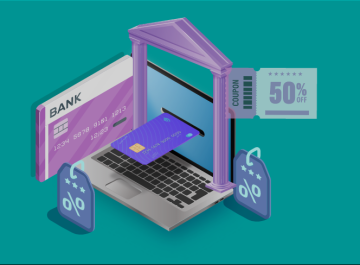The banking sector is changing at an incredible pace fueled by changing customer expectations, increasing competition, and a rapidly evolving technology landscape. Amidst these volatile conditions, customer loyalty is emerging as a key factor to drive long-term growth and profitability. Incentivizing customers for their continued patronage and leveraging word of mouth recommendations is crucial to stay ahead of the competition. Understandably, most banks are now looking at loyalty programs as strategic tools for retaining customers and securing their share of wallet.
The question of customer loyalty is made more challenging by the changed customer profile that banks must work with. For decades, customer loyalty for a bank was unquestioned. Banks offered security and stability and customers did not have any choice when it came to their financial requirements. Today, the sector is witnessing an influx of digital native millennial and Gen Z customers who expect on-demand service and a degree of personalization that was previously unheard of within the sector. These new age customers are financially literate, aware of the market environment, and unafraid to try out new financial services options that can offer them a more personalized and relevant experience. Attracting and retaining this powerful customer segment is key for banks who must find ways to build meaningful relationships based on highly personalized and innovative customer experience and loyalty programs.
Some key areas to focus on in building long-lasting and meaningful customer loyalty programs are:
- Personalized Customer Experience:This is the era of catering to a segment of one. Mass market approaches no longer work with customers who are used to a personalized value-driven approach from almost every brand they engage with and expect the same from their banks — a hyper-personalized reward system. Banks must focus on enhancing customer experience with hyper-personalized offers and loyalty programs tailored for their unique life stage. This is critical for building long lasting relationships. Banks must leverage big data analytics and Artificial Intelligence (AI) to utilize customer data and understand their preferences and financial goals and use these insights to customize their products, services, and offers. This will go a long way in strengthening customer loyalty, and making clients feel truly valued.
- Greater Transparency for Greater Trust: Banks have always enjoyed significant customer trust and now is the time to reinforce this. Customers expect their financial institutions to protect their interests and act with utmost integrity. Banks must provide clear and transparent information about their products, services, fee structure, and other policies including the terms and conditions involved in signing up for a product. This will go a long way in enhancing customer trust and loyalty even as competition increases.
- Enhanced Customer Service: Customer service can prove to be a key differentiator for banks in a highly competitive market. For banks looking to build customer loyalty, this will involve among other things, investing in training their staff to be responsive and empathetic to customer needs. It will also involve investing in multiple channels to create a lasting positive customer experience at every touch point. Leveraging technologies such as Virtual Reality (VR) for financial consultations, investment advice, and other financial planning tools can create an immersive banking experience for the customer, which can help to cement loyalty.
- Incentives and Rewards: One of the most effective tools in loyalty programs is the incentives and rewards that serve to retain customers and attract news ones. Personalization in benefits and loyalty management includes loyalty points, exclusive offers for valuable services, discounts, and cash back. The key objective here is to make customers feel that the rewards are tangible and valuable. Further, banks must make rewards relevant and contextual to customers. Gamified loyalty programs are becoming a trend in the banking industry as it fosters memorable banking experience.
- Omni-channel Experience: Technology has now made it imperative for banking services to be accessible across channels. The key to success in this multi-channel ecosystem is ensuring a seamless and unified customer experience across all channels. The challenge lies in integrating all touch points seamlessly for the customer to feel the same experience as they move from one channel to another. Banks must not only focus on delivering customer-centric solutions but also offer a seamless, high quality omni-channel experience to ensure customer satisfaction and secure their loyalty for banking.
As competition for share of customer wallet heats up in the banking industry, enduring customer loyalty will be critical for protecting and growing banking revenues. Banks must combine customer data, analytics, and technology in understanding the customer needs and roll out contextual pricing and incentive models in banking to optimize customer relationships.






